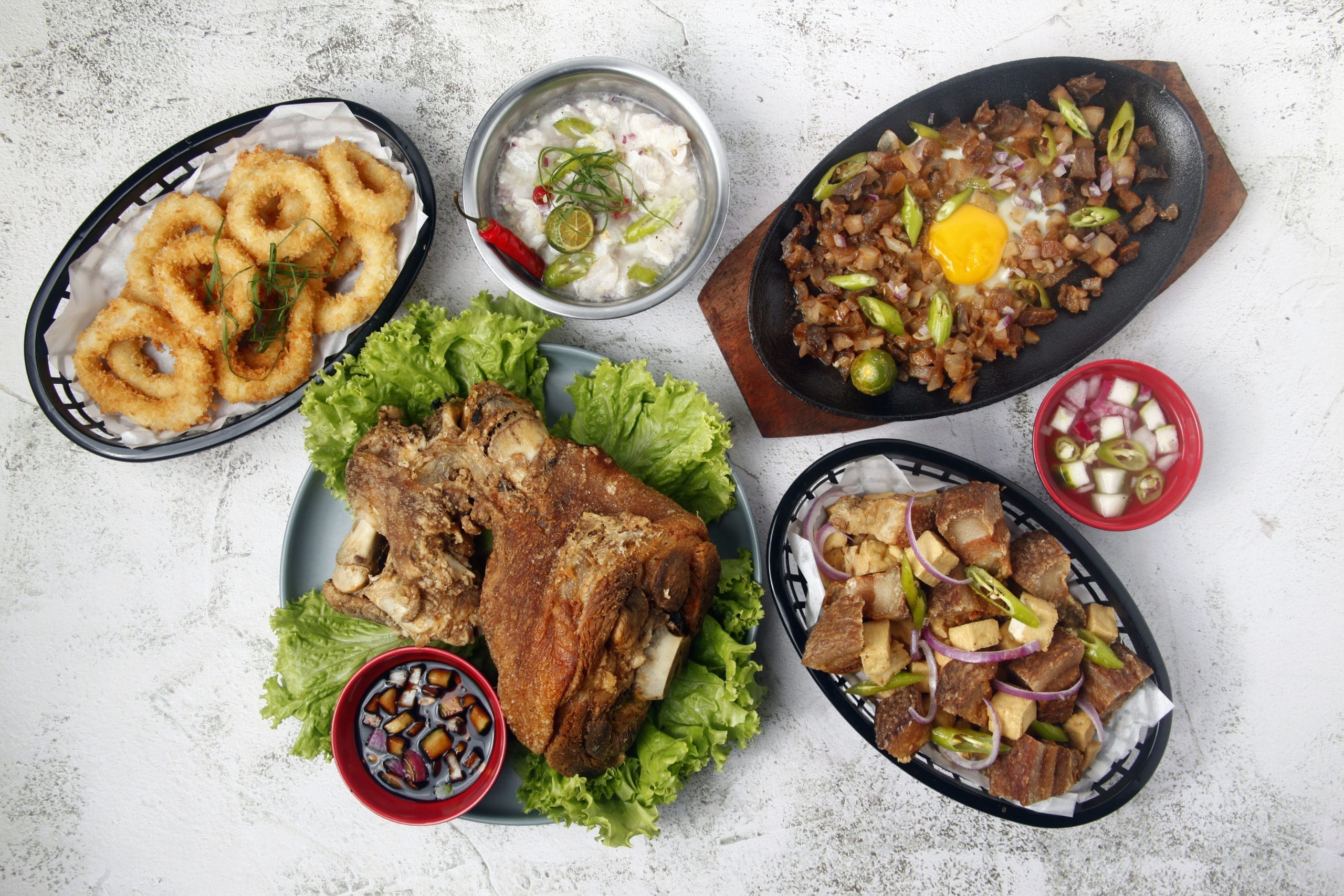When traveling to the Philippines, you should definitely experience the culture of this Southeast Asian country. Indeed, the history and different influences of the colonizers are reflected in the delicious dishes of this archipelago.
Moreover, you will find multi-ethnic origins there. Moreover, Filipino cuisine has never ceased to integrate the most diverse flavors: Chinese, Spanish or American. Indeed, Filipino cuisine offers a range of delicious recipes combining tasty Asian, European or American dishes. In addition, the culinary culture and gastronomy of the country offer dishes based on fish and seafood (shellfish, fish, tuna, etc.).
Finally, you can enjoy fresh fruits and vegetables from the region. Likewise, you can discover the eating habits through the tasting of a vegetarian dish, the variations of the delicious Filipino cuisine, the aromas and spices…

Most Famous Filipino Dishes
At first glance, shrimp and vegetables make up the soups. On the other hand, pork and chicken are seasoned with ginger, garlic or tamarind, to be enjoyed fried, roasted, grilled or wrapped in pancakes.
In addition, Chinese noodles, Spanish paella or American steaks are invited alongside dishes cooked with coconut or the fish of the day. However, Filipinos use very few spices. Indeed, they prefer mild or sweet flavors, such as desserts flavored with tropical fruit juice.

Bitter sinisang: meat and seafood soup
A soup that mixes meat, fish or shrimp with vegetables, sinisang is a stew with tamarind, green mangoes and sour fruits or leaves. It is therefore similar to Thai or Indonesian soups.
Manok and lechón: chicken and pork in the spotlight
First, the manok – chicken tinola is mixed with ginger, papaya and pepper leaves. Similarly, the truffled chicken relleno with olives and sausage competes with the fried chicken of fast food restaurants. However, the adobo chicken is cooked with garlic and vinegar, bay leaf and peppercorns. Moreover, it is a derivative of the Spanish adobado. In addition, Filipinos enhance the recipe with seafood, vegetables and various sauces, soy or liver.
Alternatively, you can try adobo pork like lechón — roast suckling pig stuffed with tamarind leaves and browned nicely. Similarly, lumpia, a spring roll with pork, hearts of palm and shrimp, is eaten with a garlic and soy sauce.


Fried fish and seafood
First, you can safely enjoy the ancient recipe of kinilaw. Indeed, this dish is prepared with raw fish or shrimp, seasoned with ginger, onions and chili pepper. Filipinos also add vinegar or lemon juice until they become translucent.
By the way, the old term kinilaw also applies to bitter salads. On the other hand, the dish sinanglay, consists of fish or crab mixed with chili peppers wrapped in Chinese cabbage leaves and cooked in coconut milk.

Rice with all the sauces
As you can imagine, rice is the staple of the Filipino diet, just as it is in Vietnam and Malaysia. Indeed, these two neighboring countries of the archipelago have had a major impact on local cuisine. Thus, rice comes in several varieties: from the small-grained milagrosa to the malagkit, a sticky rice ingredient in sweet cakes wrapped in leaves – bibingka, puto, suman or kutsinta.
The different Filipino cuisines
For starters, you can take full advantage of the provincial nuances. Indeed, indigenous Filipino cuisine is tied to the Austronesian zone of influence, with some echoes of its Asian neighbors.
For example, you can try binakol, chicken in fresh coconut (cooked in a coconut shell). Similarly, you can try pinakbet steamed with bitter melon, okra, tomatoes and eggplant in an anchovy sauce. In addition, you can find it accompanied by green beans...
On the other hand, you can find the culinary heritage of the Chinese, such as pancit, made with rice, mung beans, egg and noodles accompanied by meat, fish and vegetables. Likewise, you can try the arroz caldo version of Chinese porridge: sticky rice with chicken or tripe seasoned with kasubha, a spice less powerful than saffron, and drizzled with lemon juice and roasted garlic.
By the way, you can find Spanish Paella with olive oil, saffron and pork sausage. As, you can find its version with meats like rabbit or seafood. On the other hand, the Filipino version combines sausages, ham, clams, crab, chicken, pork, chili peppers, saffron, wine and olive oil. In addition, you can enjoy stuffed turkey for religious holidays.



